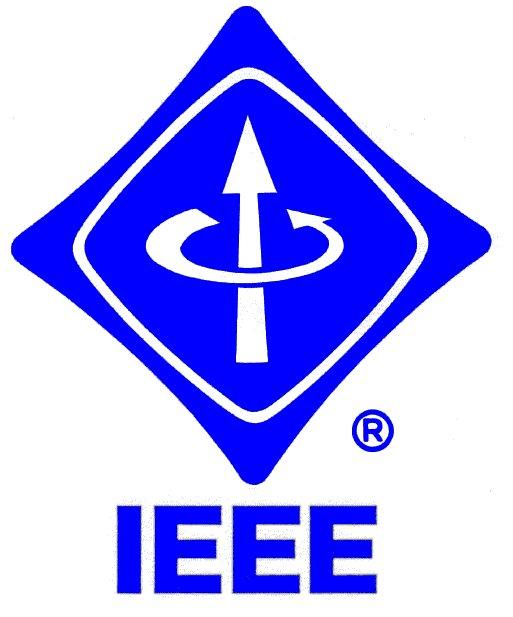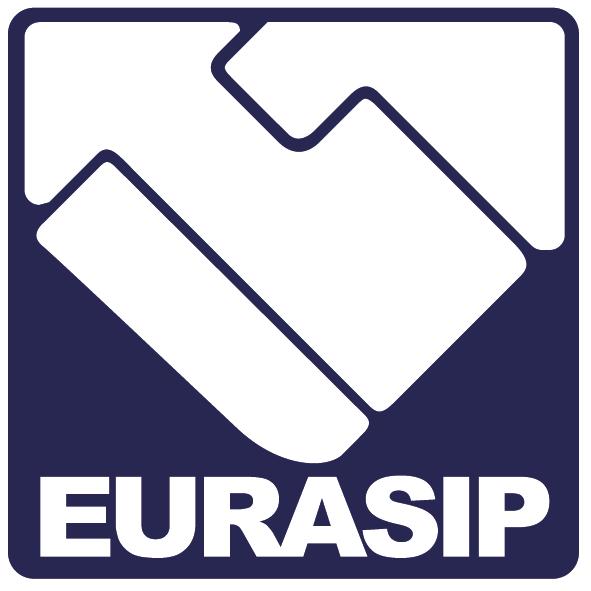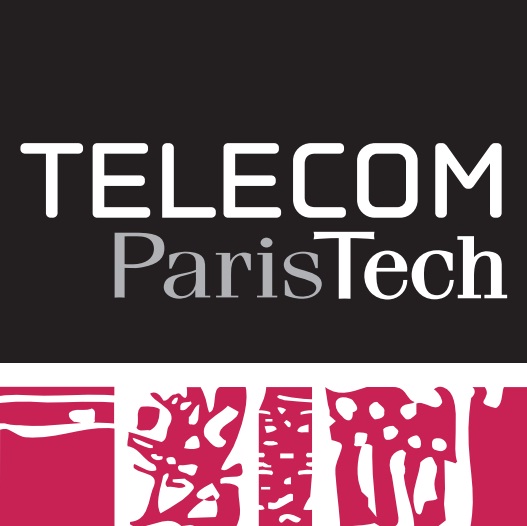Keynote Speakers1. J-L. Dugelay (Eurecom, France)
Title: Introduction to Face Recognition and Novel Trends.
Abstract: The security field uses three different types of authentication: something you know, something you have, or something you are - a biometric. It ranges from fingerprints to retina, iris or facial characteristics. Biometrics is bound to become a part of our everyday life, playing a key role in enhancing security, residing in smart cards or passports and supporting personalized Web e-commerce services. Face recognition (FR) is one of the most attractive biometrics for a broad range of applications. As it is the way people use to recognize each other, it is one of the most easily accepted biometrics. Furthermore, it is intuitive from the user's point of view and doesn't need any contact.2-D FR has been widely studied for decades and provides relevant performances. Nevertheless, such good results can only be obtained by applying tight constraints with respect to pose, illumination and expression of the face.The major difficulty in FR is related to the existence of these three sources of variations. In this presentation, we will discuss on the possible contribution of video (i.e. dynamic features) for FR to improve performances of authentication while keeping existing advantages of face recognition from 2-D images. Combining with physiological parameters (i.e. related to the appearance) within a multimodal framework, behavioral parameters (i.e. related to head motion and facial mimics) would be helpful in the design of a person system more robust to pose, illumination and expression variations. This presentation will also include some points on very recent works on soft biometrics. It consists in extracting limited information from enrolled or even unknown persons such as gender, age, presence of eyeglasses, facial hair, color of eyes.Finally, another major issue in biometrics is the security of the system, and not only its robustness. In the specific case of face recognition, one possible attack is the replay attack, i.e. the use of an ID picture from someone else.
Title : The Past, Present, and Future of Visual Quality Assessment.
Abstract: Despite great advances in digital image and video technologies and their integration in various applications, the quality of visual media is far from perfect due to many factors that can affect or impair the perceived quality of the visual media. Such factors include acquisition,processing, compression, transmission, protection, display, printing, and reproduction. Biography: Lina J. Karam received the Bachelor of Engineering degree in computer and communications engineering from the American University in Beirut in 1989 and the M.S. and Ph.D. degrees in electrical engineering from the Georgia Institute of Technology, Atlanta, in 1992 and 1995, respectively. She is currently a professor in the school of Electrical, Computer, and Energy Engineering (ECEE) at Arizona State University, Tempe, where she directs the Image, Video, and Usability (IVU) and the Real-Time Embedded Signal Processing (RESP) Laboratories. She worked at Schlumberger Well Services (Austin, Texas) on problems related to data modeling and visualization, and in the Signal Processing Department of AT&T Bell Labs (Murray Hill, New Jersey) on problems in video coding during 1992 and 1994, respectively. Prof. Karam is the recipient of an NSF CAREER Award. She served as the Chair of the IEEE Communications and Signal Processing Chapters in Phoenix in 1997 and 1998. She also served as an Associate Editor of the IEEE Transactions on Image Processing from 1999 to 2003 and of the IEEE Signal Processing Letters from 2004 to 2006, as a member of the IEEE Signal Processing Society’s Conference Board from 2003 to 2005, and as a member of the IEEE Signal Processing Society's Technical Direction Board from 2008 to 2009. Prof. Karam served as the lead guest editor of the IEEE Journal on Selected Topics in Signal Processing, Special Issue on Visual Media Quality Assessment and as a Technical Program Chair of the 2009 IEEE International Conference on Image Processing. She was one of the founding members of the International Workshop on Video Processing and Quality Metrics for Consumer Electronics (VPQM) and of the International Workshop on Quality of Multimedia Experience (QoMEX). She currently serves on the editorial boards of the IEEE Transactions on Image Processing and the Foundations and Trends in Signal Processing journals. She is the general chair (together with Ron Schafer) of the 2011 IEEE Signal Processing Society's DSP and SPE Workshops. She is an elected member of the IEEE Circuits and Systems Society’s DSP Technical Committee, and of the IEEE Signal Processing Society’s IVMSP Technical Committee, and the IEEE Signal Processing Society’s Education Technical Committee.
Title: Circular Harmonic Functions: an unifying mathematical framework for image restoration, enhancement, indexing, retrieval and recognition. Ability to efficiently co-create and share electronic media contents represents one major challenge of future internet. To fullfill user expectations while avoiding “Digital Divide 2.0” effects, induced by the inability to employ the new technologies, low cost, simple to use, possibly automatic solutions for all those basic operations like image and video acquisition, restoration, enhancement, indexing and retrieval, involved in the Networked Electronic Media chain have to be deployed in the mid term. However, computational and storage complexities can be efficiently faced whenever we are able to employ an unified mathematical framework for representing the image and video contents and fullfill the above mentioned tasks. Thus, this contribution explores the potentialities of hypercomplete image and video representations based on Circular Harmonic Functions (CHFS). These kinds of representations that are directly related to the Fourier’s series expansion of images when represented in a polar domain, in addition to many relevant mathematical proporties, have the property of including in the basis set elements like edges, lines and corners, particularly relevant for the human visual system. Thus their adoption can reduce the effort paid by the user in taking control of the technlogy still assuring the optimality of the devised solutions. In particular the subject of the talk will be the review of the mathematical properties of the Gauss-Laguerre CHFs, including the Dyadic Wavelets that can be constructed starting from them, and the main applications that have been recently realized by the author and his collaborators in the fields of image restoration and enhancement, edge extraction, object recognition and image indexing and retrieval. Finally a general architecture for multiview image processing and understanding based on CHFs will be discussed. Alessandro Neri is full professor in Telecommunications at the Engineering Faculty of the University of Roma TRE. He was born in Viterbo in 1954. In 1977 he received the Doctoral Degree cum laude in Electronic Engineering from the University of Rome "La Sapienza". In 1978 he joined the Research and Development Department of Contraves Italiana S.p.A. where he gained a specific expertise in the field of radar signal processing and in applied detection and estimation theory, becoming the chief of the advanced systems group. In 1987 he joined the INFOCOM Department of the University of Rome "La Sapienza" as Associate Professor in Signal and Information Theory at the Engineering Faculty. In November 1992 he joined the Electronic Engineering Department of the University of Roma TRE as Associate Professor in Electrical Communications, and became full professor in Telecommunications in semptember 2001. He is currently teaching Digital Communications, Information Theory, and Mobile Telecommunication Systems (Laurea Magistralis on Communication and Information Technologies), at the Engineering Faculty of Roma TRE. Prof. Neri is also member o the board of the Engineering Doctoral School of the University of Roma TRE. Since 2004 he is also teaching at the Scuola Superiore di Specializzazione in Telecomunicazioni of the Ministry of Telecommunications. From 2006 to 2008 he was Professor, by courtesy, of Economics and Management of Communication Technologies”, at the Business School of the LUISS University, Rome (Laurea Magistralis curriculum). Since 2008 he is Professor, by courtesy, of Economics and Management of Communication Technologies”, of the Master in Business Administration at the Business School of the LUISS University, Rome. Since 1992 he is responsible for coordination and management of research and teaching activities in the Telecommunication fields at the University of Roma TRE, currently leading the Digital Signal Processing, Multimedia & Optical Communications Laboratory at the Applied Electronics Department. His research activity has mainly been focused on information theory, signal theory, and signal and image processing and their applications to both telecommunications systems and remote sensing. Among them we cite multimedia communications and multimedia technologies, mobile communication systems, telematics, mobile-internet (GPRS, UMTS, WLAN e WIMAX) and communication security and biometric systems. These activities are carried out under tight cooperation with national and international ICT companies and international research centers. In the above mentioned research projects he mainly contributed to the formulation of new techniques and methodologies in the field of the estimation and detection theory (Bayesian approach) on a strictly rigorous mathematical framework. He is author of about 230 publications. Since 1998 he is also responsible for planning and design activities related to ROMA TRE integrated campus telecommunication system and services. Professor Neri is member of the working group of the IEEE Educational Activities Board for global accreditation activities on Biometrics. Prof. Neri is member of the scientifc Committee on ANSSAIF (Associazione Nazionale Specialisti Sicurezza in Aziende di Intermediazione Finanziaria), an Italian Society of experts on security of financial and banking systems. Prof. Neri has been a member of the Managing Committee of CNIT (National Inter-University Consortium for Telecommunications), a non-profit Consortium currently linking 33 Italian Universities, whose main purpose is to foster research activity and provide networking support to specific projects in the area of telecommunications. Since december 2008, prof. Neri is the Presidente of the RadioLabs Consortium (Consorzio Università Industria – Laboratori di Radiocomunicazioni), a non-profit Consortium created in 2001 to promote tight cooperation on applied research programs between universities and industries, and currently linking the University of Rome “Tor Vergata”, the University of Roma Tre, The University of Aquila, Selex Communications S.p.A., and Telespazio S.p.A..
Title: Near-infrared revisited: Applications in Computational Photography and Computer Vision
Abstract: Silicon-based digital camera sensors exhibit significant sensitivity beyond the visible spectrum (400-700nm). They are able to capture wavelengths up to 1100 nm, i.e., they are sensitive to near-infrared (NIR) radiation. This additional information is conventionally treated as noise and is absorbed by a NIR-blocking filter affixed to the sensor. We show that retaining instead of removing NIR information can significantly improve certain image processing and computer vision tasks. Indeed, intrinsic properties of the NIR wavelength band guarantee that images can be sharper, less affected by man-made colorants, and more resilient to changing light conditions. We illustrate the benefits of using NIR images in conjunction with standard color images in applications such as de-hazing, single and multiple illuminant detection, material classification, and skin rendering. The design of a camera than can simultaneously capture visible and NIR information on one single sensor will also be discussed.
Biography: |
 |
 |
 |
Institutions & Sponsorship


![]()
![]()





![]()